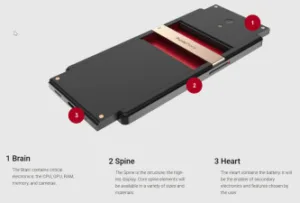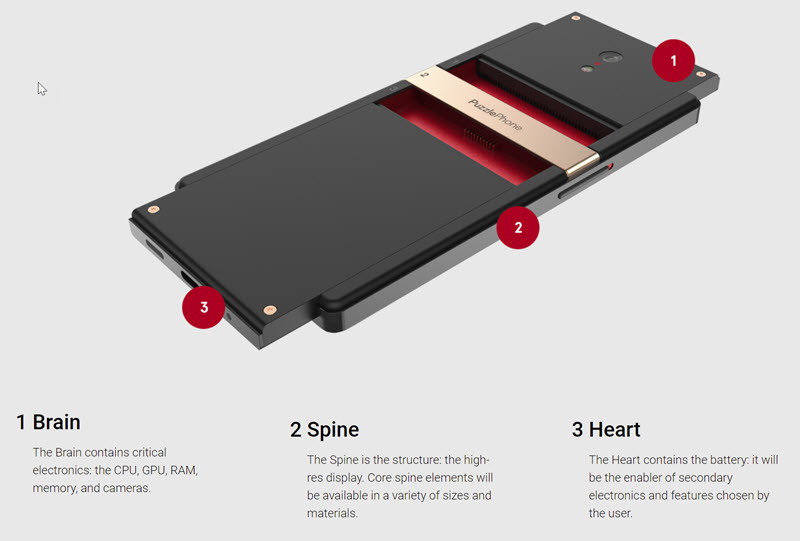For today’s Display Daily, I have combined a couple of topics that both looked interesting to me, but neither had worked its way to the top of my agenda. It occurred to me that both had an common element about them – how worthy good ideas can struggle to gain acceptance for good real world reasons.
The common good idea is that of reducing the environmental impact of the use of technology. I can’t think that I’ve ever heard anybody argue against that idea, although I’ve heard a few say it out loud when I had no sense that they actually meant it! But millions of citizens around the world do care about their environment and would take steps to ease their impact and use of resources if they could.
The first of the ideas is of making smartphones more upgradable and longer lasting. That’s not a new one and I have been reporting on initiatives in this area for many years.
Project Ara was a concept developed by a team within Motorola Mobility, which became part of Google and the project was intended to allow modular handsets built around a standardised framework, allowing, for example, the radios to be upgraded to meet the requirements of 4G, 5G etc. It should be added that Google also had some ip related to modular mobile phones from Modu, founded in 2007. The concept was slightly modified to be rather than a collection of parts, a core set of functionality that could be extended in display, cameras or speakers. In 2016, E Ink announced that it was to be the exclusive ePaper display supplier to the device. Sony, Panasonic and Toshiba were named as partners to make modules. However, the project was shelved in 2016, just the year before it had been due to start shipping some units.
The Idea Mutates
The idea of extensibility didn’t go away and eventually ‘Moto Mods’ were launched that were designed to extend smartphones with cameras, extra battery capacity, a projector, game controllers, speakers and wireless charging. However the Mods only worked with the Moto Z, which arrived in late 2016. By then, the Motorola brand was under the control of Lenovo and wasn’t directly replaced with a unit that could accept the Mods, although you can still buy them from Motorola.
Back in 2014, Art wrote about the PuzzlePhone (PuzzlePhone: A New Modular Smartphone Concept), which was a new approach from a start-up in Finland that had the backing of money from the EU’s research funds and was trying to ‘build a phone designed to last up to 10 years’. There is still a website, but as far as I can tell, nothing ever came to market.
In 2015, we reported on an initiative by Dutch company Fairphone, to design a modular smartphone around seven basic components. (Fairphone Brings Desktop Modularity to Your Pocket)
Fairphone Brings Desktop Modularity to Your Pocket
So, I was intrigued to spot an article by the BBC that reported that so far, the Fairphone has sold around 400,000 units with many of them sold in Germany where environmental and green issues are often taken more seriously. The phone has an informal network of volunteers that help to repair the handsets and one of them said
“Germany is a wealthy country. The willingness to reach deeper into your pocket for a seemingly fair product is therefore also higher,”
By now, Fairphone is on the Fairphone 4 and the unit ships for €579 with 128GB of storage and 6GB of RAM. It supports 5G and has a five year warranty. The display is a 6.3″ FullHD unit and there are dual main cameras. It’s built around a Qualcomm Snapdragon 750G.
Another player still in the market is Shiftphones which has seen increasing sales, but has only shipped around 70K devices in six years. It has 5″ and 6″ units – with a 5.7″ unit sold out when we looked. The firm claims that
“Repairs are inexpensive and you can even take matters in your own hands: We give you the parts and video-tutorials and you can fix your SHIFT yourself. And in case you disassemble the device or root it, your warranty will still be valid.”
So the idea lingers on.
The Paperless Office – A Long Standing Joke
The second topic is a long standing joke in many places and that is the idea of a ‘paperless office’. I had quite a big involvement in projects to go paperless several decades ago, but it was tricky. The reality is that many people love paper – for years I still filed all the press materials from conferences and exhibitions until I realised that I almost never, ever, looked at them again. It always seemed quicker to head over to the PC and look things up.
However, a couple of weeks ago, IDC reported that in Q4 2021, the market for hardcopy peripherals was down by 17.6% year on year, with value down 12.3% to $9.7 billion. That’s still a lot of printers, and although the supply side was affected by component shortages, that does look like enough of a drop that it might suggest the enthusiasm for paper might be waning. It made me wonder if the fact that a lot of employees are now remote means more of a reliance on display-based communication, replacing paper.
That doesn’t mean that the paperless office is here, but it may be a ‘straw in the wind’ showing that our desire to print everything is declining, if not disappearing. A significant factor in this is, surely, the great displays in many of our devices which allow comfortable reading of documents. (BR)


